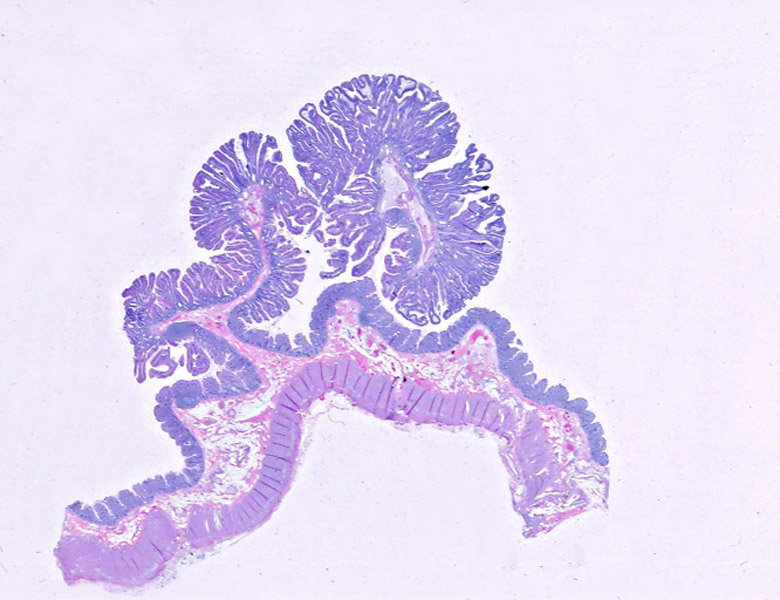System: Gastrointestinal: Colon: Pre-Neoplastic: Traditional Sessile Adenoma, Longer discussion (Override)

System: Gastrointestinal: Colon: Pre-Neoplastic: Traditional Sessile Adenoma, Longer discussion (Override)



villiform architecture is typical Image
ectopic crypts which don't connect to the muscularis mucosa; shortened Image
branching; note uniform nature of cells Image
eosinophilic cytoplasm; tall columnar cells Image
next example Image
oncoytic cyto Image
aberrant crypt formation seen here Image
The term serrated adenoma was first used in 1990 in regards to polyps demonstrating both a serrated hyperplastic-like architecture and adenomatous changes or dysplasia (Longacre). Longacre & Fenoglio-Preiser also distinguished serrated adenomas from mixed polyps, which had previously been considered a chance merging of two independent polyps, one hyperplastic and the other adenomatous. However, serrated adenomas may be mixed and include components resembling sessile serrated adenoma, hyperplastic polyp, or adenoma. Additionally, some serrated adenomas show high-grade dysplastic changes or intramucosal carcinoma
These polyps often have a pedunculated or broad-based polypoid pattern of growth, with a cerebriform or petal-like endoscopic appearance (Matsumoto). Smaller polyps, are often endoscopically indistinguishable from hyperplastic polyps (Jamarillo).
Management of serrated adenomas remains inconclusive due to lack of evidence-based data for this new classification of polyps. The most recent guidelines by the U.S. National Task Force on Colon Cancer recognize the association between the serrated polyp pathway and potentially aggressive lesions, but do not make specific management recommendations.
Longacre TA, Fenoglio-Preiser CF. 1990. Mixed hyperplastic adenomatous polyps/serrated adenomas. A distinct form of colorectal neoplasia. Am. J. Surg. Pathol. 14:524–37
Matsumoto T, Mizuno M, Shimizu M, Manabe T, Iida M. 1999. Clinicopathologic features of serrated adenoma of the colorectum: comparison with traditional adenoma. J. Clin. Pathol. 52:513–16
Jamarillo E, Watanabe M, Rubio C, Slezak P. 1997. Small colorectal serrated adenomas: endoscopic findings.
CJA, Foutch PG, Mai HD, Pardi K, Manne RK. 1991. Prevalence and malignant potential of colorectal polyps in asymptomatic, average-risk men. Am. J. Gastroenterol. 32:641–52
Bauer VP, Papaconstantinou HT. Management of serrated adenomas and hyperplastic polyps. Clin Colon Rectal Surg. 2008 Nov;21(4):273-9.